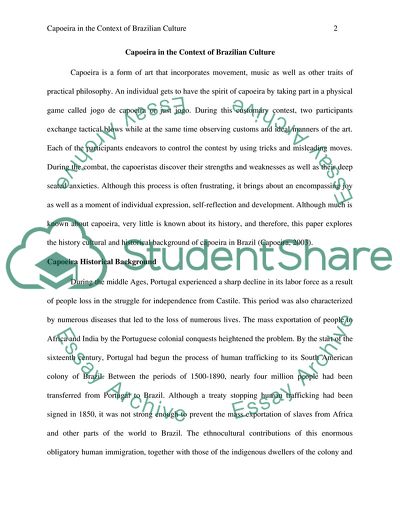Cite this document
(Capoeira in the Context of Brazilian Culture Coursework Example | Topics and Well Written Essays - 2000 words, n.d.)
Capoeira in the Context of Brazilian Culture Coursework Example | Topics and Well Written Essays - 2000 words. https://studentshare.org/culture/1821210-capoeira
Capoeira in the Context of Brazilian Culture Coursework Example | Topics and Well Written Essays - 2000 words. https://studentshare.org/culture/1821210-capoeira
(Capoeira in the Context of Brazilian Culture Coursework Example | Topics and Well Written Essays - 2000 Words)
Capoeira in the Context of Brazilian Culture Coursework Example | Topics and Well Written Essays - 2000 Words. https://studentshare.org/culture/1821210-capoeira.
Capoeira in the Context of Brazilian Culture Coursework Example | Topics and Well Written Essays - 2000 Words. https://studentshare.org/culture/1821210-capoeira.
“Capoeira in the Context of Brazilian Culture Coursework Example | Topics and Well Written Essays - 2000 Words”. https://studentshare.org/culture/1821210-capoeira.


